Savor the essence of Japanese cuisine with Oyakodon: a comforting dish that’s simple and quick to prepare. In less than 30 minutes, treat yourself to a culinary escape where tradition and deliciousness blend into a unique experience.
What is Oyakodon?
In Japan, if you want to grab a quick bite, it won’t be a sandwich or a hamburger but rather local specialties such as noodles and donburi dishes. Among the latter, Oyakodon (親子丼) or Oyako Donburi (親子丼ぶり) clearly stands out.
Particularly popular during rushed lunches. Surrounding office districts, crowds of workers gather in small establishments to savor this efficient and comforting meal.

Oyakodon, which literally translates to “parent-child bowl” (親子丼), is a poetic representation of Japanese family culinary tradition, where the “parent” (chicken) and the “‘child’ (” egg) come together harmoniously. These ingredients, simmered in a sweet-salty sauce based on dashi, are carefully arranged on a bed of rice. This combination creates an irresistible contrast of textures and flavors, making each bite memorable and desired.
This dish is not only a long-time restaurant favorite, but it’s also a staple in Japanese households, symbolizing the comfort and warmth of a family meal. Oyako Donburi (親子丼ぶり) embodies simplicity, tradition, and the connection between generations, offering a culinary experience that goes far beyond its apparent simplicity, and reminds of the values of sharing and conviviality at the heart of Japanese cuisine.
What is a Donburi?
Oyakodon (親子丼) is a prominent member of the vast donburi family, a category of Japanese dishes that celebrates simplicity and richness of flavors in a single bowl. Donburis are characterized by their presentation in a large rice bowl about 15 cm in diameter, topped with various ingredients. This serving method is not only practical but also allows for a perfect fusion of flavors between the rice and its toppings.
In short: I fried some pork and put it on rice with a little sauce
is an unbalanced meal, but For lunch, I enjoyed a delicious Katsu-donburi
, it immediately sounds more classy to colleagues.
Among the most popular variations, there’s Gyudon (牛丼), where thin slices of beef, not pork as it might sometimes be misinterpreted, simmer with onions in a light sauce, creating a harmony of sweet and savory flavors.
Katsudon (カツ丼), on the other hand, features breaded and fried pork cutlets, covered with a beaten egg and cooked to perfection. This combination offers a crispy and comforting texture, highly appreciated by Japanese cuisine enthusiasts.
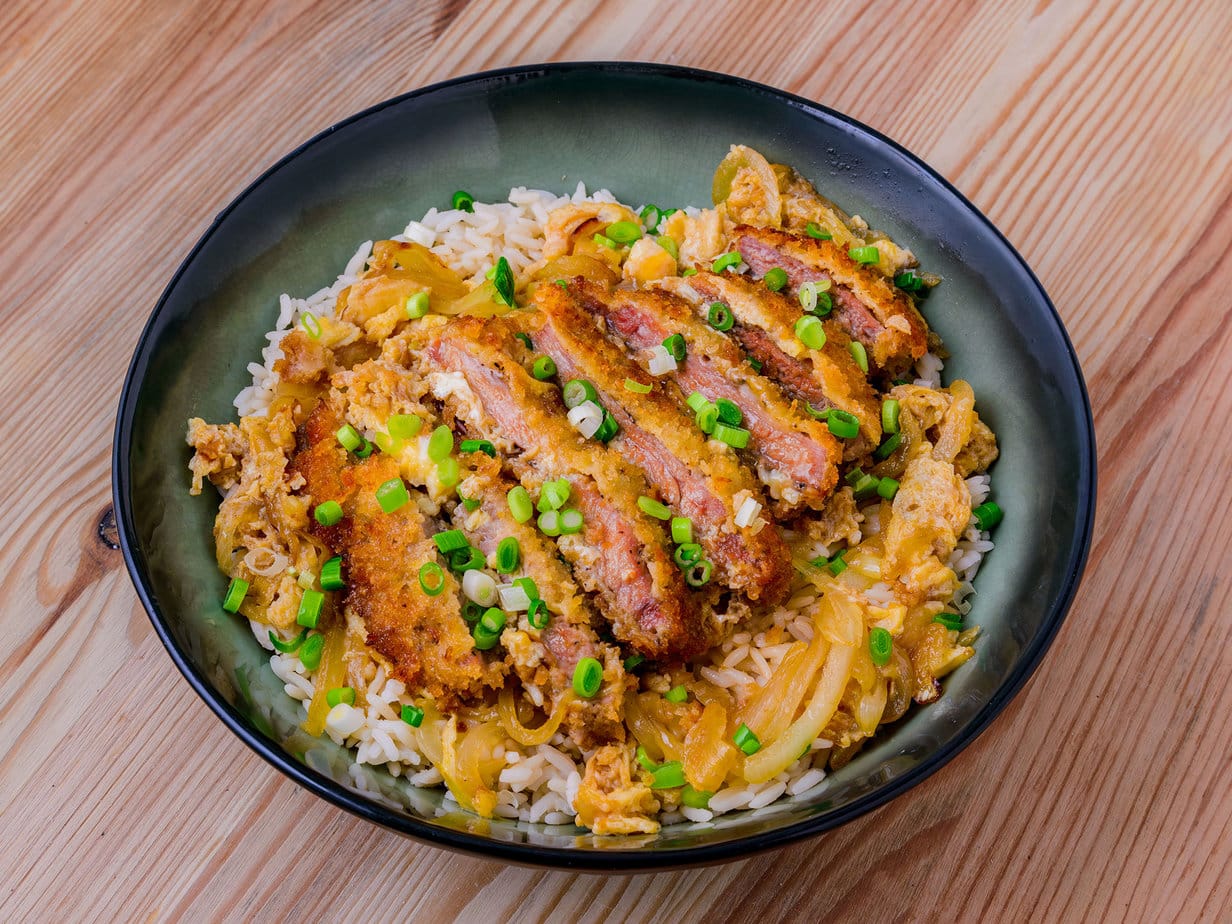
Tendon (天丼) is another appealing variant, where pieces of tempura, vegetables or seafood wrapped in a light batter and fried, rest on a bed of rice, bringing a striking contrast between the crunchiness of the tempura and the softness of the rice.
Finally, Kaisendon (海鮮丼) delights seafood lovers with its various raw fish toppings, offering a fresh and delicate taste experience, where each bite is a celebration of the ocean’s treasures.
The Main Ingredients of Oyakodon

Chicken thighs are far preferable to chicken breasts. The flavor is much more intense
The dashi broth, cornerstone of Japanese cuisine, provides a deep umami base. Use homemade dashi for an authentic flavor or simplify with dashi powder for a convenient alternative.
The sake, a Japanese rice alcohol, introduces a subtle sweetness and helps balance the flavors while adding aromatic complexity.
The light soy sauce infuses the dish with a rich color and delicate salty flavor, without overwhelming the other ingredients. You can use tamari sauce instead
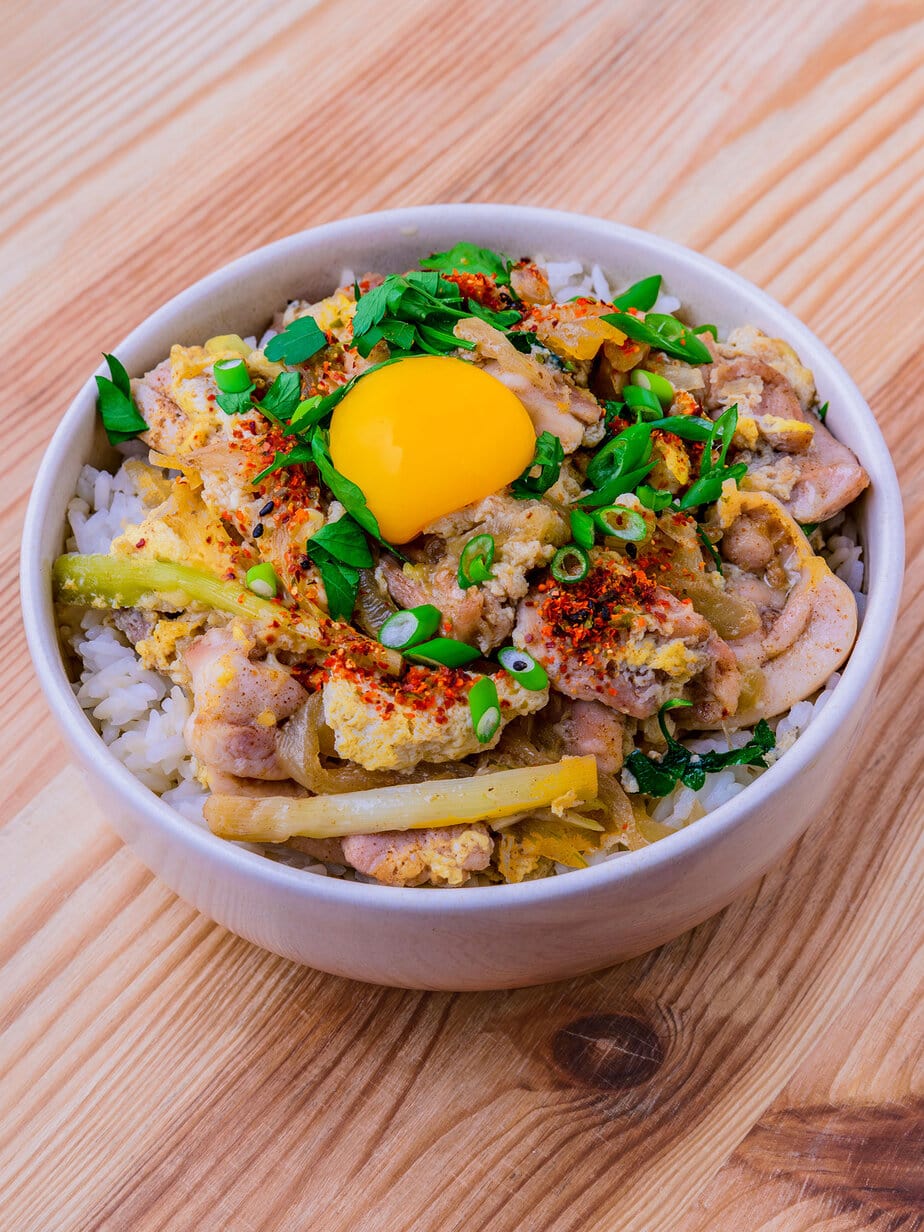
Oyakodon – Japanese Chicken and Egg Bowl
Equipment
- 1 Wok
Ingredients
- 340 g chicken thighs boneless, skinless, thinly sliced
- 240 ml of dashi stock homemade or from dashi powder
- 30 ml of sake
- 15 ml light soy sauce
- 15 g of sugar
- 170 g of onions thinly sliced
- 3 scallions sliced, white parts separated from green
- 2 stems of mitsuba optional
- 2 eggs plus the egg whites from the topping
To serve
- 2 portions of cooked white rice
- Togarashi
- 2 egg yolks The whites are used during the recipe
Instructions
- In a wok, mix dashi, sake, soy sauce, and sugar. Bring to a boil, then maintain a strong boil.
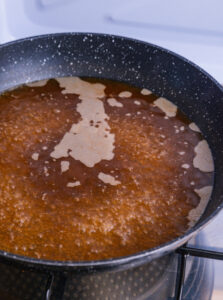
- Add the onion and the white parts of the green onions. Cook for about 5 minutes until half tender.
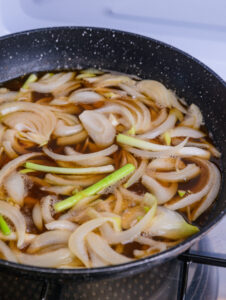
- Add the chicken. Cook while stirring until fully cooked and the broth is reduced by half, 5 to 7 minutes for thigh meat or 3 to 4 minutes for breast meat.
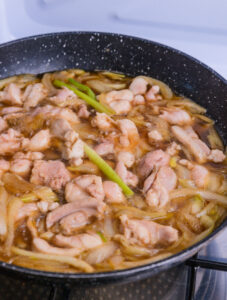
- Incorporate half of the green onions and the mitsuba. Adjust the taste with more soy sauce or sugar if necessary.
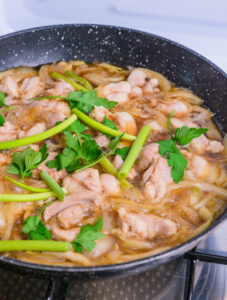
- Reduce the heat to a gentle simmer. Pour the beaten eggs and whites in a thin stream, using chopsticks to distribute.
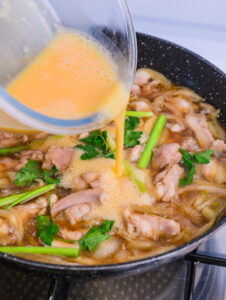
- Cover and cook the eggs to your liking, 1 minute for runny eggs or 3 minutes for medium-firm.

To serve
- Put the hot rice in a large bowl or individual bowls.
- Add the egg and chicken mixture with the excess broth.
- Add an egg yolk to the center of each bowl.
- Garnish with the remaining green onions and togarashi.

